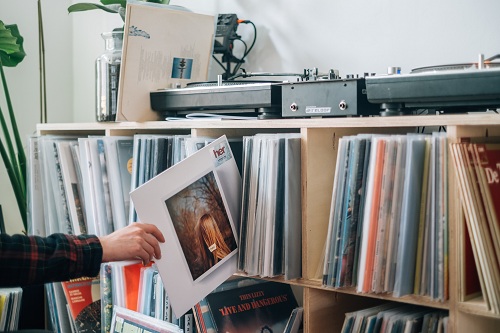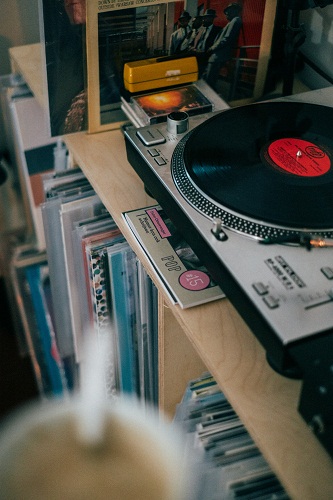How to sample vinyl records?

That's the eternal question: how to produce real cool music? Well if I really knew I'd probably be working on a song with Billie Eilish or Lana Del Rey right now (hey, I'm available!), but the truth is that, of course, there is no magic recipe. Or maybe there is: create emotion for the listener. Ok, this is highly subjective.
But one thing I do know is that one way to achieve this is to have a variety of unique sounds that capture the listener.
How and where to find these sounds?
⚡ One way is to play ... well, instruments (I love my Juno 106!).
⚡ Another way is to find sample packs. You will find thousands of sample sets (commercial or free ones) for each element you're looking for: drums (kick, snare, hihat, toms, cowbells), drum machines sample packs (vintage ones, hello TR707 and Drumtracks - to new ones), instruments (piano, Rhodes, organ, guitar), special effects (SFX, uplifters, downlifters, noises, etc.).
While it's cool to use sample packs for certain parts of your production, using sample packs only for everything might create generic or boring productions, without personality. And you will end with the same question again: What is my style? What makes my productions unique?
⚡ Another great source of sounds is sampling. And in particular from vinyl records! Yes, LP records are an infinite source of samples that you can use for your productions. What's great when sampling a vinyl is that, in a way, you're connected in thought with another producer who already spent time to make this tiny bit of sound really great, years or decades ago!
You can visit your local record store, or simply buy many LPs in a second hand store or garage sale. For almost nothing you will have a treasure of thousands of samples! (Don't forget to clear your samples with the original producer/label if you release your track.) This is "crate digging": the art of finding records.
The magic thing when taking a pile of vinyl records is of course the sound itself, but also the fact that you never know in advance what you will find. (If you want to impress with a buzzword, this is called "serendipity").
You don't necessarily need a top notch Technics MK 2 turntable, since here we're not speaking about scratching and other turntablist techniques. All you need is any turntable that you can plug to your MPC, computer or audio interface, so that you can import the sample in your DAW (Ableton Live, Audacity, MPC Software, etc.)
Concretely, plug the output of your turntable to the input of your hardware sampler or computer's audio interface, and hit "Record". There is not much more! Now if you really want to see if a sample is a good candidate for your production, play it in loop. The magic will happen (listen to Modjo - Lady for inspiration and the remake here) ... or not ;)
Over the years, you will build up your own library of samples that you can use for your productions. Sometimes it will be just a one-shot or loop sample, sometimes it will require chopping (see MPC tutorials for this).
All you need is time ... and luck to find the perfect samples.
In some cases, you will find the perfect sample - let's say a great chord progression played with a guitar.
Great ... except that you have drums on top of it, that you don't want to keep. Now you're probably wondering:
How to remove drums from a sample?
During years, isolating or removing drums from a track was either impossible or done with equalization or "slicing" techniques. Rather long and complicated, requiring manual editing.
Now, you can just use our VST DrumExtract:
Good luck!
Inspiration: discover here how Daft Punk made their wonderful album with samples.
If you're looking for the best VST plugins for hip hop beatmaking and sampling, then DrumExtract might be for you!

Photos: Jonas Leupe
Read also: How to remove drums from a song with Ableton Live.
